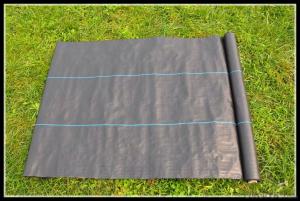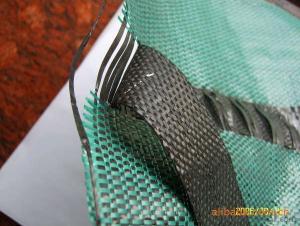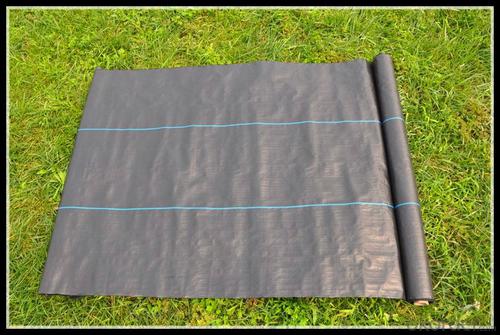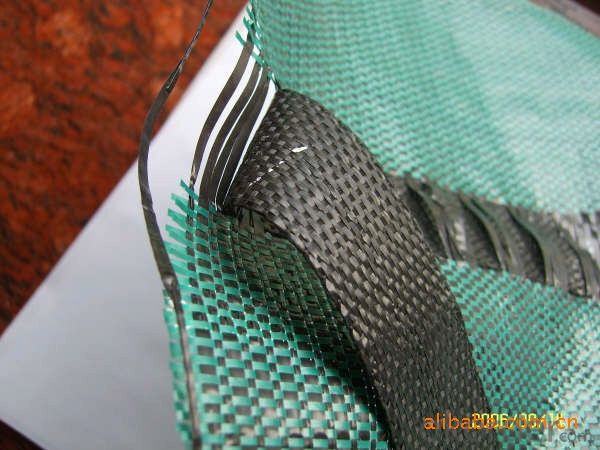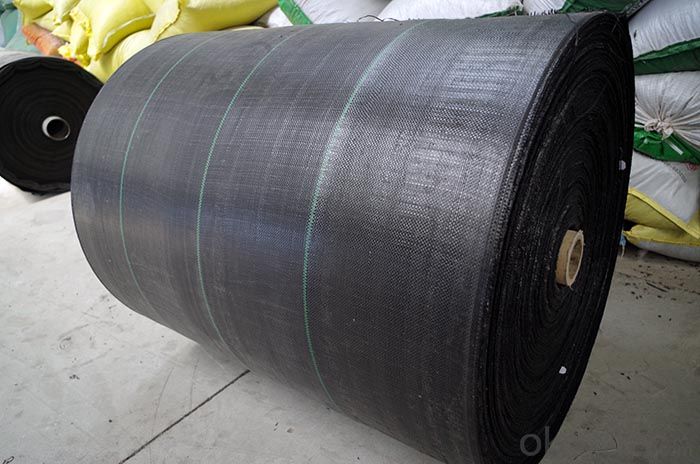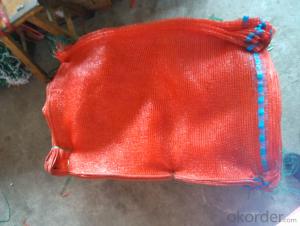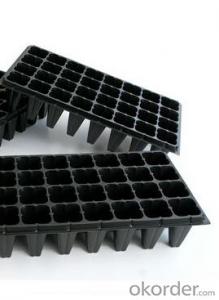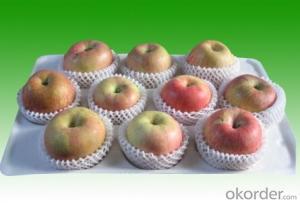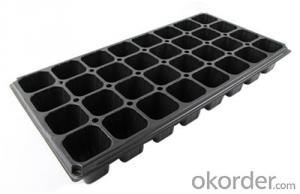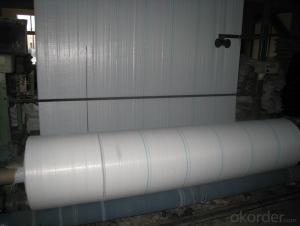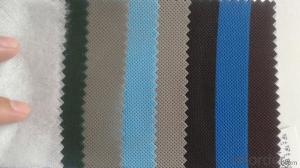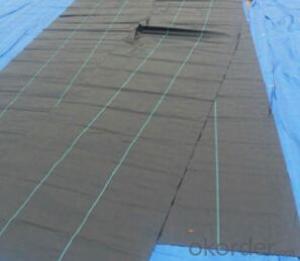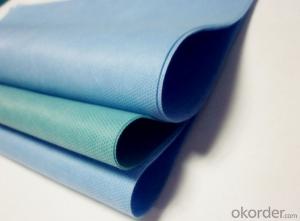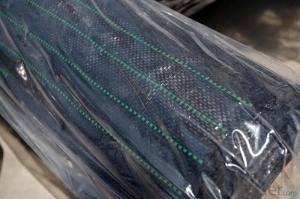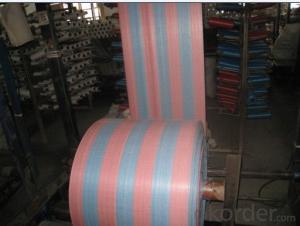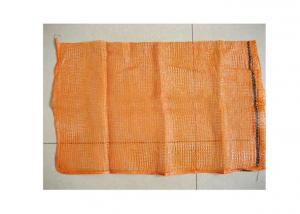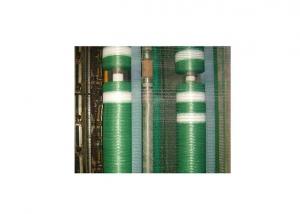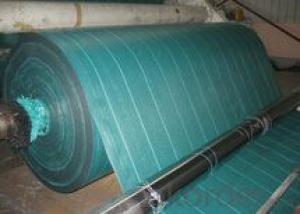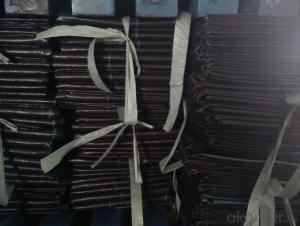Woven Fabric for Agriculture 100% PP material
- Loading Port:
- Shanghai
- Payment Terms:
- TT OR LC
- Min Order Qty:
- 2000 m²
- Supply Capability:
- 100000 m²/month
OKorder Service Pledge
OKorder Financial Service
You Might Also Like
Woven Fabric for Agriculture 100% PP material
Weed Control fabric not only prevents weeds, it encourage root growing by keep soil moist and cool. Made of UVtreated polypropylene,
this costeffective weed control fabric feteures allow the free flow of air,water and nutrients to the soil while blocking sunlight and weeds.
This chemical free method for stopping weed grow for years.
Weed Control Fabric helps minimize your yard work since it stops weeds from growing. You do not have to use herbicides, which can damage your lawn andcause harm tochildrenand animals.Made of
Polypropylenematerial , weed block is easily cut to fit inyour garden or hard landscape areas.
Specification:
Material | Woven PP/PE Fabric |
Width | 0.5m - 4.4m |
Length | 50m - 2500m |
Color | Black/Grass Green/Japser/Black-Green |
Weave | 9*9 to 13*13 |
Weight | 60gsm-180gsm |
U.V. | With or Without U.V. |
Life Span | 3~5 years with U.V. treated |
Feature | Non-Toxic |
Style | Plain |
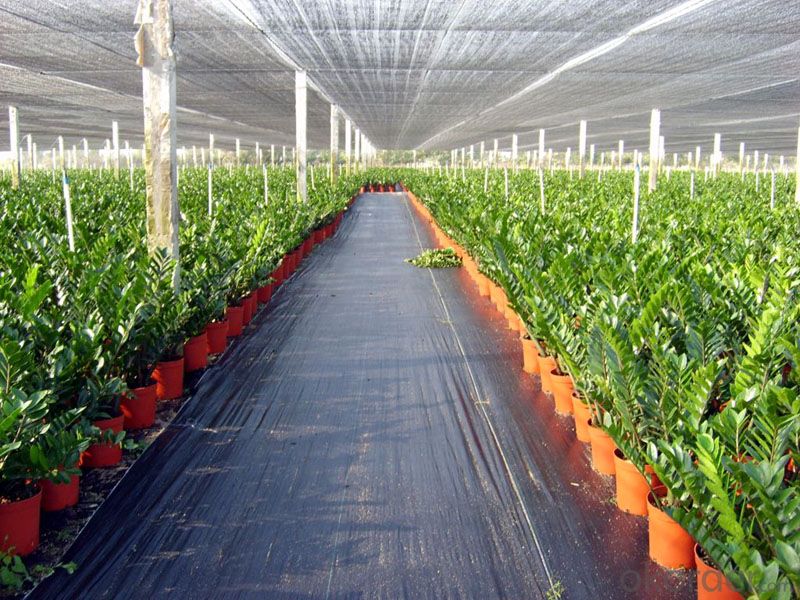


FAQ:
1. Where is your factory located in?
Factory is located in Jiangsu Province, Neat to Shanghai Port.
2. How long have you been in this product production?
We have been in the business more than 10 years,
3. Can we have some sample or trial order before bunk order?
Yes, we can provide you some free samples, and for trial order, we will offer you the lowest price.
- Q: What are some ground cover options for regions with high heat and humidity?
- Some ground cover options for regions with high heat and humidity include creeping thyme, liriope, mondo grass, sweet potato vine, and Asiatic jasmine.
- Q: Can nursery trays be used for starting plants from cuttings?
- Yes, nursery trays can be used for starting plants from cuttings. Nursery trays provide a controlled environment for the cuttings, allowing them to establish roots and grow into healthy plants. The trays also help in organizing and easily monitoring the progress of the cuttings.
- Q: Are nursery trays suitable for starting seeds?
- Yes, nursery trays are suitable for starting seeds. They provide a controlled environment for seed germination and allow for easy transplanting of seedlings once they have grown. The trays also have adequate drainage holes to prevent waterlogging and promote healthy root development.
- Q: How it is made ?What are the types of plastic ?
- There is no set formula for plastic. PVC is made in a process called polymerization. It is made from the monomer 1-chloroethene: CH2=CHCl In the process of polymerization it splits in the double bond to create the polymer PolyVinyl Chloride Which looks like: -[-CH2-CHCl-]- the -[- and -]- symbolize that the polymer repeats at those points. There are some other compounds: 1. PET (PETE), polyethylene terephthalate: Commonly found on 2-liter soft drink bottles, cooking oil bottles, peanut butter jars. 2. HDPE, high-density polyethylene: Commonly found on detergent bottles, milk jugs. 3. PVC, polyvinyl chloride: Commonly found on plastic pipes, outdoor furniture, shrink-wrap, water bottles, salad dressing and liquid detergent containers. 4. LDPE, low-density polyethylene: Commonly found on dry-cleaning bags, produce bags, trash can liners, food storage containers. 5. PP, polypropylene: Commonly found on bottle caps, drinking straws, yogurt containers. 6. PS, polystyrene: Commonly found on Styrofoam peanuts, cups, plastic tableware, meat trays, take-away food clamshell containers 7. OTHER, other: This plastic category, as its name of other implies, is any plastic other than the named #1–#6, Commonly found on certain kinds of food containers, Tupperware, and Nalgene bottles. Nylon, Rayon, Synthetic Rubber etc. are also plastics.
- Q: I posted a previous question on yahoo answers! about homemade ferret toys. I can't remember if it was this one or my other account...One answer that I recieved was: They love to play with plastic bags and wrapping paper.I tried this today. I got about 30 plastic bags out of the kitchen closet, and unsquished them... threw them in a huge pile in the living room, and then put him inside. He was supervised during this play time because I have found quot;Mr. Stewiequot; to be much like a baby in many way... I once caught him trying to eat a cigarrete butt that had somehow found it's way to the floor, and other mischeifs.Would it be safe for him to play with this item alone? What if I leave some bags in his room while I am at work? (His cage door is left open while I work long hours as a teacher.)
- I would not allow playing with plastic bags because it is quite possible that he would swallow bits of the plastic. Also could get choked or cover his wind pipe.
- Q: Can ground cover be used as a natural weed suppressant?
- Yes, ground cover can be used as a natural weed suppressant. Ground cover plants can densely cover the soil, preventing weeds from receiving sunlight and germinating. Additionally, they can compete with weeds for nutrients and water, further suppressing their growth. By choosing the right type of ground cover and maintaining it properly, it can effectively suppress weed growth in a natural and sustainable way.
- Q: How do you prevent mold and fungus in a nursery tray?
- To prevent mold and fungus in a nursery tray, it is essential to maintain proper hygiene and environmental conditions. Here are some effective measures: 1. Cleanliness: Regularly clean the nursery tray with a mild detergent or bleach solution to remove any organic matter or residue that may encourage mold growth. 2. Air circulation: Ensure adequate air circulation around the tray by placing it in a well-ventilated area. This helps to prevent moisture buildup and discourages mold and fungus from thriving. 3. Proper drainage: Ensure that the nursery tray has sufficient drainage holes to allow excess water to escape. Standing water promotes the growth of mold and fungus, so make sure the tray doesn't hold excessive moisture. 4. Controlled humidity: Monitor the humidity levels in the nursery area, keeping it between 50-60%. High humidity creates a favorable environment for mold and fungus, so use a dehumidifier if necessary. 5. Sterilize tools and containers: Before using any tools or containers in the nursery tray, sterilize them with a bleach solution or by using a sterilizing agent. This prevents the introduction of mold spores or fungus from contaminated equipment. 6. Proper watering: Avoid overwatering the plants in the nursery tray, as excess moisture promotes mold and fungus growth. Water the plants only when necessary, allowing the top layer of soil to dry out slightly between waterings. By following these preventive measures, you can significantly reduce the risk of mold and fungus in a nursery tray, ensuring a healthy environment for plant growth.
- Q: What's the use of oil?
- Oil is an important pillar of the national economy. As we all know, it is a fuel for automobiles, airplanes, submarines, tanks and other equipment. By using the existing technology, it can also synthesize a variety of fibers, rubber, chemical fertilizers and other compounds. The most common use in industry is to turn oil into a very active compound, ethylene, which can then be combined with ethylene to produce many substances.
- Q: This question asks whether using plastic mulch in agriculture can enhance the soil's structure and fertility.
- <p>Yes, agricultural plastic mulch can improve soil structure and fertility. It helps retain soil moisture, reducing the need for irrigation and promoting root growth. Mulch also suppresses weed growth, conserving soil nutrients that would otherwise be competed for by weeds. Over time, as the mulch decomposes, it adds organic matter to the soil, enhancing soil structure and fertility. However, it's important to use biodegradable mulches to avoid long-term soil pollution from non-degradable plastics.</p>
- Q: Can ground cover be used in high foot traffic areas?
- Yes, ground cover can be used in high foot traffic areas. However, it is essential to choose a ground cover that is durable, resilient, and able to withstand heavy use. Some suitable options for high foot traffic areas include creeping thyme, mondo grass, or certain types of grasses, such as Bermuda grass. Proper maintenance and regular monitoring are also crucial to ensure the ground cover remains in good condition despite the frequent use.
Send your message to us
Woven Fabric for Agriculture 100% PP material
- Loading Port:
- Shanghai
- Payment Terms:
- TT OR LC
- Min Order Qty:
- 2000 m²
- Supply Capability:
- 100000 m²/month
OKorder Service Pledge
OKorder Financial Service
Similar products
Hot products
Hot Searches
Related keywords
